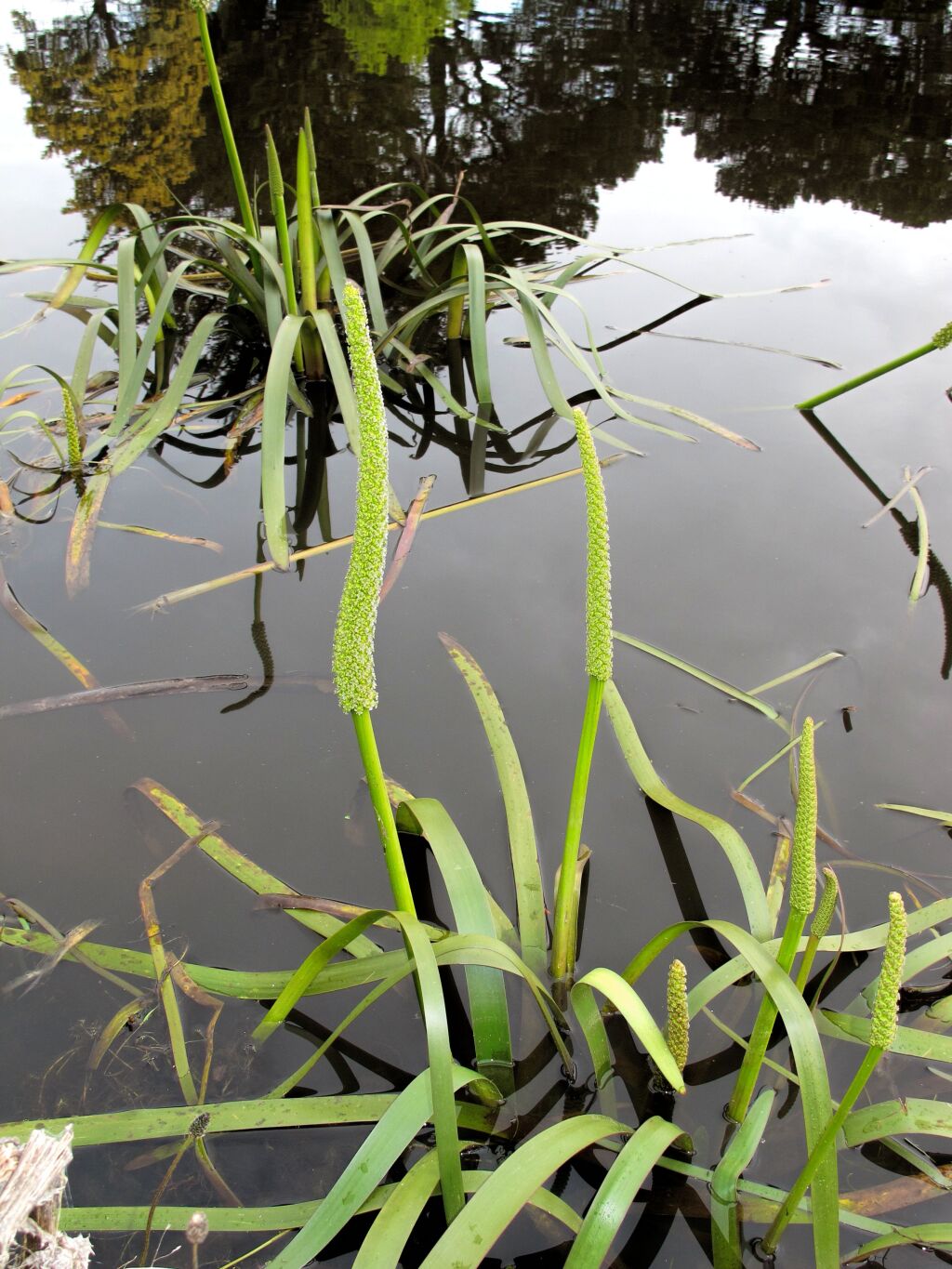Cycnogeton procerum
(R.Br.) BuchenauRobust, rhizomatous, emergent, perennial, aquatic herb. Rhizome 7–18(–30) mm thick, woody, fibre-covered, with roots ending in tubers. Tubers usually elongated, 20–145 mm long, 4.5–13 mm diam., 2.5–20 times as long as broad, terminating long roots c. 3.5–20(or more) cm long. Leaves ± flat and strap-like, floating to erect, dorsiventral, glossy above, up to 350 cm long and 41 mm wide, thick and spongy basally, ± elliptic in cross-section c. 3 cm below the sheath summit with the width of the spongy portion c. 2.2–5.5 times its thickness and with the sheaths usually not or just meeting across the face of the blade (but see note below on East Gippsland variant); apex of basal sheath without a ligule. Scape at fruiting erect to reclining, c. 27–145 cm long, 4–23 mm diam.; infructescence 6–51 cm long, 17–42 mm diam. Fruits c. 52–320 per infructescence, ± globular to broad-obovate to ellipsoid in outline, 6.8–14.4 mm long, 6.8–10.9 mm diam., with pedicel 2–5 mm long; carpels 3–6(occasionally 7), all maturing or 1–2(occasionally 3–5) aborting and causing fruit asymmetry; mature carpels ventrally attached along 45–80% of the carpel length, straight to twisted around each other (often varying on the same infructescence), each with a broad-convex dorsal ridge and two broad lateral ridges (lateral ridges sometimes reduced or absent), lacking projections except apex slightly pointed. Fruits Sep.–Mar.(–Jun.).
MuM, Wim, GleP, Brid, VVP, VRiv, MuF, GipP, OtP, WaP, Gold, CVU, GGr, DunT, NIS, EGL, EGU, HSF, HNF, OtR, Strz. Common in still to slow-flowing fresh water to 2 m deep, mostly in permanent swamps, lagoons and streams, but withstands extensive periods of dryness. Abundant in Eucalyptus camaldulensis sites. Sometimes in brackish water (East Gippsland variant).
Extremely variable in habit, leaf form, fruits and carpels, with numerous gradations between extremes. Some variation is partly linked to geographical distribution; within Victoria an East Gippsland variant is notable. Leaves of this variant are comparatively narrow (5–13 mm), almost always erect, in cross-section (below the sheath summit) ± circular with the sheaths often overlapping and width of spongy portion only c. 1.6–2.4 times its thickness. Fruits of this variant are highly polymorphic, varying from 1–6 mature carpels per fruit, from squat to elongated in outline, and from untwisted to strongly twisted; the distal free portions of mature carpels vary from straight to strongly falcate.
 Spinning
Spinning


